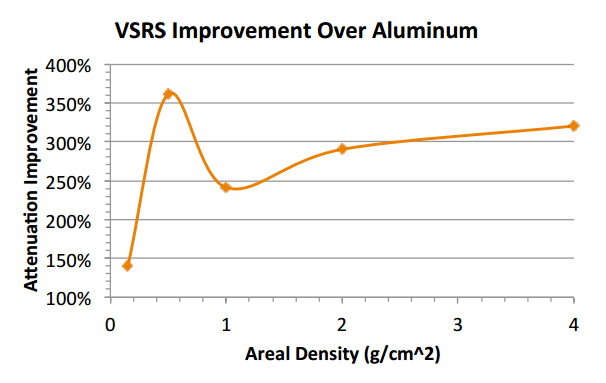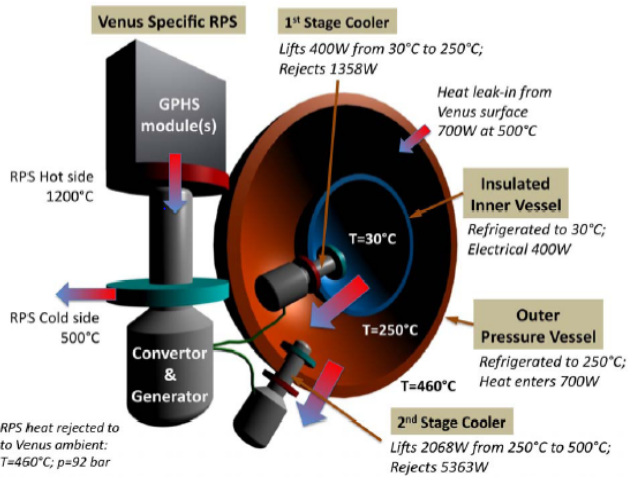Many years, many PhDs, and many tears have all be spent on space hardening electronics. While the United States Department of Defense MIL-HDBK-814 outlines radiation hardening devices for survivability again ionizing radiation, many of these techniques, electronics, and end-applications are far, far above-and-beyond the SiCLOPS mission. By implementing extensive use of consumer electronics, while simultaneously employing best practice construction techniques and realizing an acceptable loss of VIRGILs, SiCLOPS can far undercut the traditional years (and accompanying millions and millions of dollars of research) that come with developing a purpose built, space hardened system. Because of the distributed and multisensor nature of SiCLOPS, we have an implicit acceptance of risk that some of the VIRGILs will fail. We can mitigate, to an acceptable degree, the effects of cosmic radiation by using a conformal coating with integral graded-Z radiation hardening. Research by Wrobel, et al, indicate that graded Z material is extreamly effective for radiation hardening COTS devices. Figure 1 shows an improvement over Al shielding, Figure 2 shows the recommended setup for shielding, and Figure 3 shows the relative size to a standard printed circuit board [1]. SiCLOPS will coat all of our electronics in this material.

Figure 1. A graded-Z conformal coating offers large improvements over standard aluminum.

Figure 2. Recommended setup for a graded-Z shielding scheme.

Figure 3. Representation of conformal coating.
Heat will be managed in a multifaceted way. By using a two stage Sterling system in addition to multiple layers of silicon carbide and Argon gas, we will be able to keep the VIRGIL cool enough inside for the COTS components to work.
The three main environmental hazards for a sensor on Venus are the high acidity of the atmosphere and high temperature and pressure at the surface. If a containment vessel is appropriately chosen, the acidity and pressure extremes of Venus can be negated relatively easily along with a slight resilience to the heat through insulation [2]. This leaves the high temperature, 500°C, of Venusfs surface as the main sensor resiliency design challenge.
Since the technology for 500°C chips, batteries, etc. is not yet developed to the point of effective operation, we chose to add an active cooling system to the sensor which will cool the electronics to 30°C [3]. The highest efficiency and most practical cooling system currently available is a two stage Stirling cooler [3]. A prototype of a one stage version of this system was tested in [4] and was found to have an overall coefficient of performance of 0.376 when lifting 105.7 W from 200°C to 500°C. This prototype weighed 1.6 kg.
For our application with a two stage design, the first stage lifts an estimated 4.5W produced by the electronics from 30°C to 250°C. The second stage lifts 16.5W rejected from the first stage in addition to an estimated 350W leaking in from the small, heavily insulated outer shell of the sensor [3]. The heat at this stage is lifted from 250°C to 500°C. The overall used power is estimated to be 987W based on the prototype results in [4]. The overall added weight for the active cooling system is estimated to be 3.2kg which is double the weight of the single stage prototype.
| Estimated Power Consumption | 987W |
| Estimated Weight | 3.2kg |
Table 1. Two Stage Stirling Cooling System Important Parameters

Figure 4. Two stage Stirling cooler example from [2].

Figure 5. Small Stirling cooler built for industrial applications.
[1] J. Wrobel, "Versatile Structural Radiation Shielding and Thermal Insulation through Additive Manufacturing," in Conference on Small Satellites, Logan, UT, 2013, pp. 1-9. Internet: http://digitalcommons.usu.edu/cgi/viewcontent.cgi?article=2926&context=smallsat
[1] E. Kolowa, et al. "Extreme Environment Technologies for Future Space Science Missions", NASA [Online], Sept. 19, 2007, Available: http://vfm.jpl.nasa.gov/files/EE-Report_FINAL.pdf
[2] G. W. Hunter. (2009, October). Long-Lived Venus Lander Technologies [Online]. Available: http://www.lpi.usra.edu/vexag/meetings/archive/vexag_7th/oct2009/presentations/hunterVenusLanerTechnologies.pdf
[3] G. A. Landis, K. C. Mellott. "Venus surface power and cooling systems", Science Direct [Online], May 1, 2007, Available: http://www.unmannedspaceflight.com/index.php?act=Attach&type=post&id=23200
[4] R. D. Lorenz. "Planetary seismology ? Expectations for lander and wind noise with application to Venus", Science Direct [Online], Dec. 19 2011, Available: http://www.lpl.arizona.edu/~rlorenz/seismology.pdf






